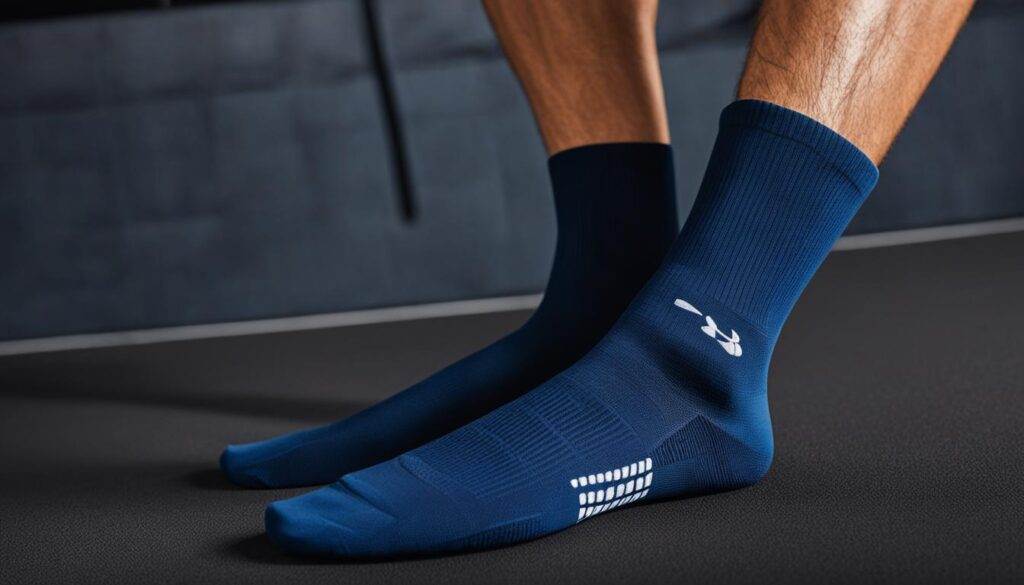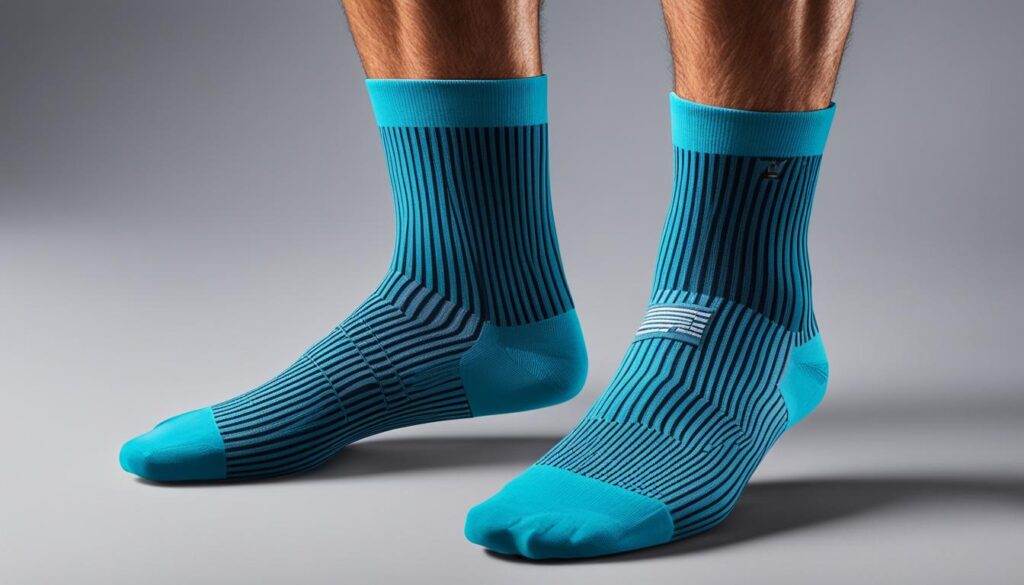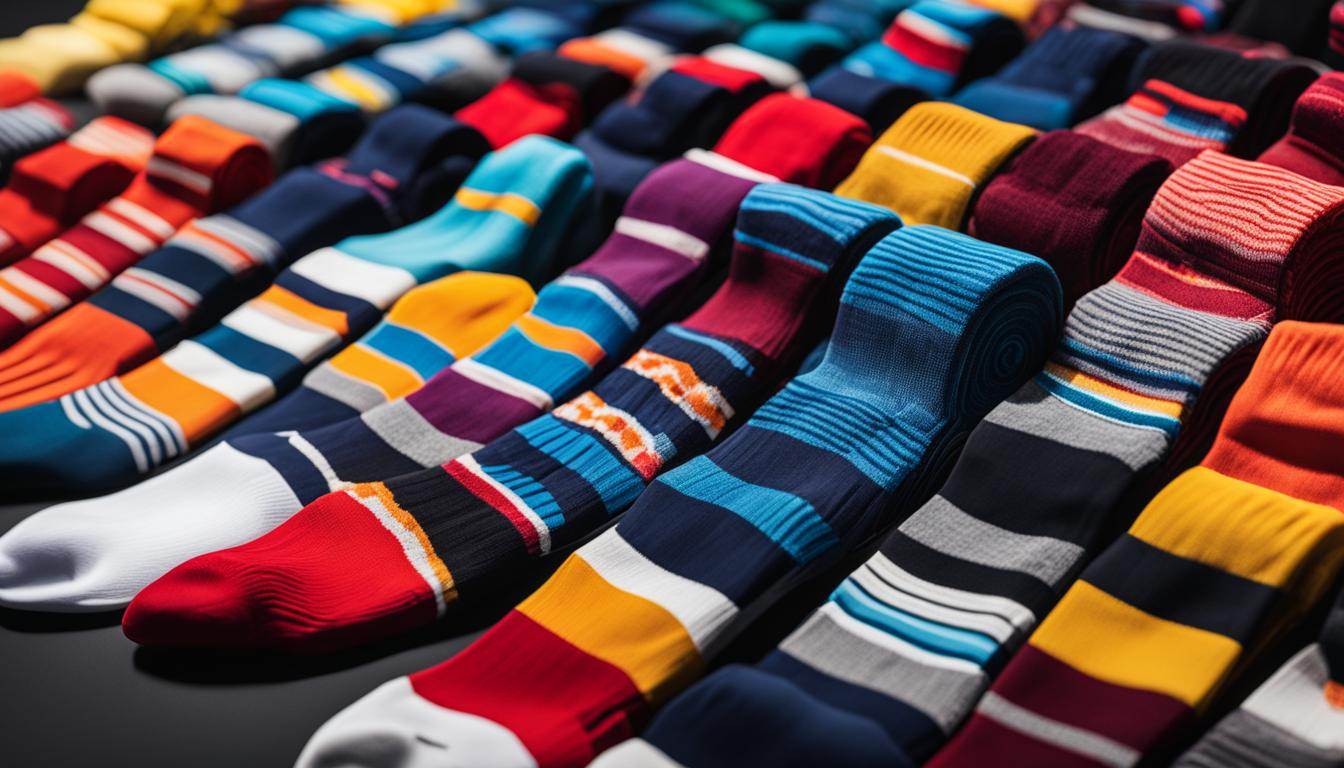Discover the best types of socks for athlete’s foot that offer both comfort and effectiveness, featuring top-rated options for active individuals. These comfortable and effective socks will help in managing athlete’s foot while providing the necessary support for athletes.
What is Athlete’s Foot?
Athlete’s foot, also called tinea pedis, is a common fungal infection that impacts the skin on your feet. It usually happens because of a fungus called tinea, which loves warm and moist places. If you have athlete’s foot, you might feel itching or burning, and your skin may peel or crack—especially between your toes. Sometimes the infected areas can look red and swollen.
Knowing these symptoms helps with early detection and better treatment. If you don’t treat athlete’s foot, it could lead to more serious infections.
You can catch this fungus in places like public locker rooms, swimming pools, and shared showers. It spreads easily from dirty surfaces or by sharing shoes and socks. Understanding how it spreads can help you take steps to avoid it.
To keep athlete’s foot away, good foot hygiene is key. Keeping your feet clean and dry can really cut down on fungal growth. Changing socks regularly and wearing breathable shoes are simple but effective ways to reduce your chances of getting this annoying condition.
The Role of Socks in Managing Athlete’s Foot
Socks are super important for managing athlete’s foot because they help protect against moisture and fungi. Choosing the right socks keeps your feet dry while reducing irritation from rubbing.
Moisture-wicking socks are great for people who are active. These special socks pull sweat away from your skin to keep your feet dry during exercise or long wear times. They’re usually made from synthetic materials like polyester or nylon, which helps control humidity around your feet—really important for stopping infections like athlete’s foot.
Some socks even have antimicrobial treatments that stop bacteria and fungi from growing. This is especially helpful if you tend to have stinky feet or play sports a lot.
Comfort matters too when picking socks for athlete’s foot management. Look for options that have enough cushioning but aren’t too tight; a good fit prevents blisters while letting air flow around your feet.
Overall, investing in quality socks with moisture-wicking features and antimicrobial properties can be a smart way to manage athlete’s foot while keeping comfortable during various activities.
Types of Socks for Athlete’s Foot
Moisture-Wicking Socks
Moisture-wicking socks are super important for athletes who have athlete’s foot. These socks are made from synthetic materials like nylon and polyester, which help pull sweat away from your skin. Keeping your feet dry is key to stopping the growth of fungus.
When you’re picking moisture-wicking socks, check for features like mesh ventilation and hydrophilic properties that make them breathable. Brands like Dri-FIT and Coolmax offer great options for athletes needing to keep their feet dry during workouts. Lightweight athletic socks can really boost your comfort and performance.
Antimicrobial Socks
Antimicrobial socks are treated with special agents, such as silver ions or copper oxide, to stop bacteria and fungi from growing. This is especially helpful if you have athlete’s foot because it helps reduce odor and stops further infections.
Look for brands that use advanced technologies like tea tree oil or bamboo fibers, which have natural antimicrobial properties. These materials not only fight odor but also feel good when worn for a long time. Choosing anti-fungal socks can be a smart move in keeping your feet healthy.
Compression Socks
Compression socks can be a great addition if you’re dealing with athlete’s foot. They apply graduated pressure to your legs and feet, helping reduce swelling and improve circulation. Better blood flow means quicker recovery after tough workouts while also keeping moisture from building up around your feet.
Find compression options that give support without making it hard to move. Over-the-calf styles work well to provide stability while cutting down on fatigue during long activities. Using circulation-boosting socks might help keep your feet feeling good overall.
Additional Considerations
When looking at the best types of socks for managing athlete’s foot beyond moisture-wicking and antimicrobial features, think about cushioned or padded options that add extra comfort during physical activities. Seamless stitching can also reduce friction against your skin, which helps prevent blisters.
Always pay attention to fit; wearing shoes that don’t fit right or mismatched sock sizes can make symptoms of athlete’s foot worse. Explore different styles like no-show or crew-length designs based on what shoes you wear and what you like best.
Understanding the various types of specialized athletic socks available is key in managing athlete’s foot effectively. By focusing on moisture control through wicking materials, adding antimicrobial properties to fight infections early on, and using compression technology for better circulation—athletes can protect their feet while enjoying their favorite activities!

Fit and Comfort
When picking socks for athlete’s foot, fit and comfort really matter. The right socks can stop blisters and discomfort that come from wearing them too long. Look for socks that hug your feet snugly but don’t squeeze too tight. Features like seamless stitching or irritation-free designs can make a big difference in comfort.
A good sock should shape to your foot while still letting it breathe. This helps keep moisture down, which is key to avoiding fungal infections. Be careful with sock sizing; if they’re too tight, you might get chafing, and if they’re too loose, they could bunch up and cause friction.
Additional Considerations:
- Sock Shape: Some brands make socks designed specifically for the left and right foot.
- Cushioned Socks: Choose ones with extra padding in high-impact areas for more comfort during activities.
- Material Stretch: Make sure the material stretches enough to move with your foot without losing its shape.
Material and Durability
The material of your socks plays a huge role in managing athlete’s foot. Breathable fabrics like merino wool or synthetic options such as polyester help control moisture by pulling sweat away from your skin. Keeping your feet dry is crucial in reducing the chance of fungal growth.
Durability is also important; look for socks made from strong materials that can handle wear during activities like running or hiking. A durable sock will keep its moisture-wicking abilities over time, giving you consistent support.
Recommended Materials:
- Merino Wool: Great for breathability and wicking away moisture.
- Synthetic Fibers: Nylon and polyester are tough while managing sweat well.
- Blends: Think about blends that mix natural fibers with synthetics for the best performance.
Personal Preferences
Your personal likes play a big part in finding the best socks for athlete’s foot management. Different activities might need specific types of socks just for you. For example:
- Activity Level: Runners may want lightweight athletic socks made for speed and breathability.
- Sock Height: Decide between no-show or quarter-length based on what shoes you’re wearing.
- Compression Needs: Compression socks can help recovery by boosting circulation during tough workouts.
Customization Options:
Check out brands that let you customize features like padded zones or arch support to make them even better against athlete’s foot issues. Also, think about styles based on what looks good to you; colorful designs might be more motivating than plain ones.
By thinking about these factors—fit and comfort, material durability, and personal preferences—you’ll be well on your way to choosing the perfect sock to manage athlete’s foot effectively while keeping your feet healthy overall.

Hygiene and Footwear
Keeping your feet clean and choosing the right footwear are key steps in preventing athlete’s foot, a common fungal infection. Changing your socks regularly is one of the best ways to maintain foot hygiene, especially after exercising or any activity that makes your feet sweat. Look for moisture-wicking socks that help keep your feet dry, which can lower the risk of fungal infections.
When picking shoes, go for those made from breathable materials. This allows air to flow, helping to prevent moisture buildup inside the shoe. Regularly cleaning and disinfecting your shoes is also important to remove any potential fungal spores. You might want to use antifungal sprays or powders inside your shoes as an extra measure against re-infection.
Avoid walking barefoot in public places like locker rooms or swimming pools where fungi thrive on damp surfaces. Wearing sandals or water shoes in these areas can protect your feet from contamination.
Medical Treatment
If you think you have athlete’s foot or see symptoms like itching and redness between your toes or on the soles of your feet, it’s a good idea to talk to a healthcare professional for a proper diagnosis and treatment options. Over-the-counter antifungal creams or powders can work well for mild cases; just follow the instructions on the package.
For more severe cases or if symptoms don’t go away with home treatments, a doctor may prescribe stronger antifungal medications. Make sure to follow their advice closely for the best results.
You might also consider using specific types of socks designed with antimicrobial properties. These special socks can provide an extra layer of protection against fungi while helping you heal.
Lifestyle Modifications
Making some lifestyle changes can really help manage athlete’s foot effectively. Keeping your feet dry is super important; if you’re prone to sweaty feet, think about using moisture-absorbing powders throughout the day. Wearing breathable socks made from materials like merino wool or synthetic fibers can help wick away moisture too.
Good foot hygiene matters—wash your feet daily with soap and water and dry them thoroughly afterward, especially between the toes where moisture likes to hide.
Try not to share personal items like towels or footwear with others to cut down on the risk of spreading infection. If you’re often in places that promote fungal growth (like gyms), investing in specialized antifungal athletic socks designed specifically for preventing infections during sports activities could be beneficial.
By making these lifestyle changes along with choosing suitable sock options and seeking medical treatment when needed, you can effectively manage and prevent athlete’s foot from coming back again.

